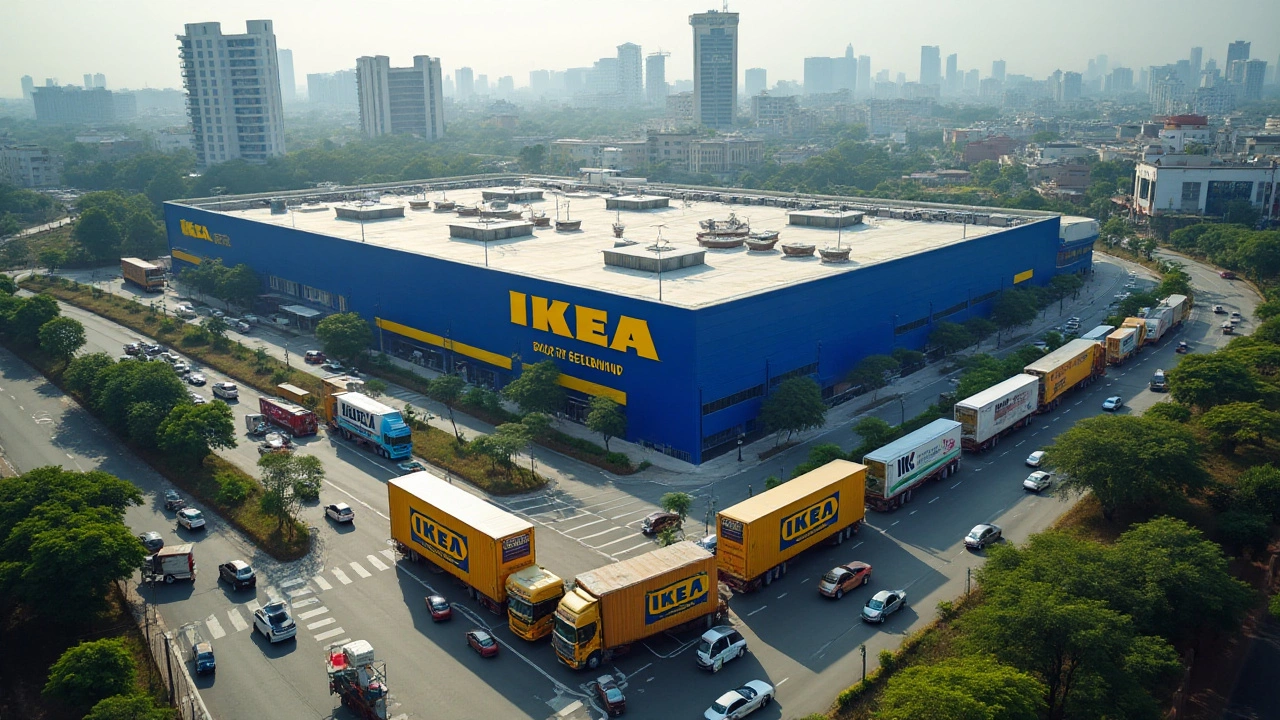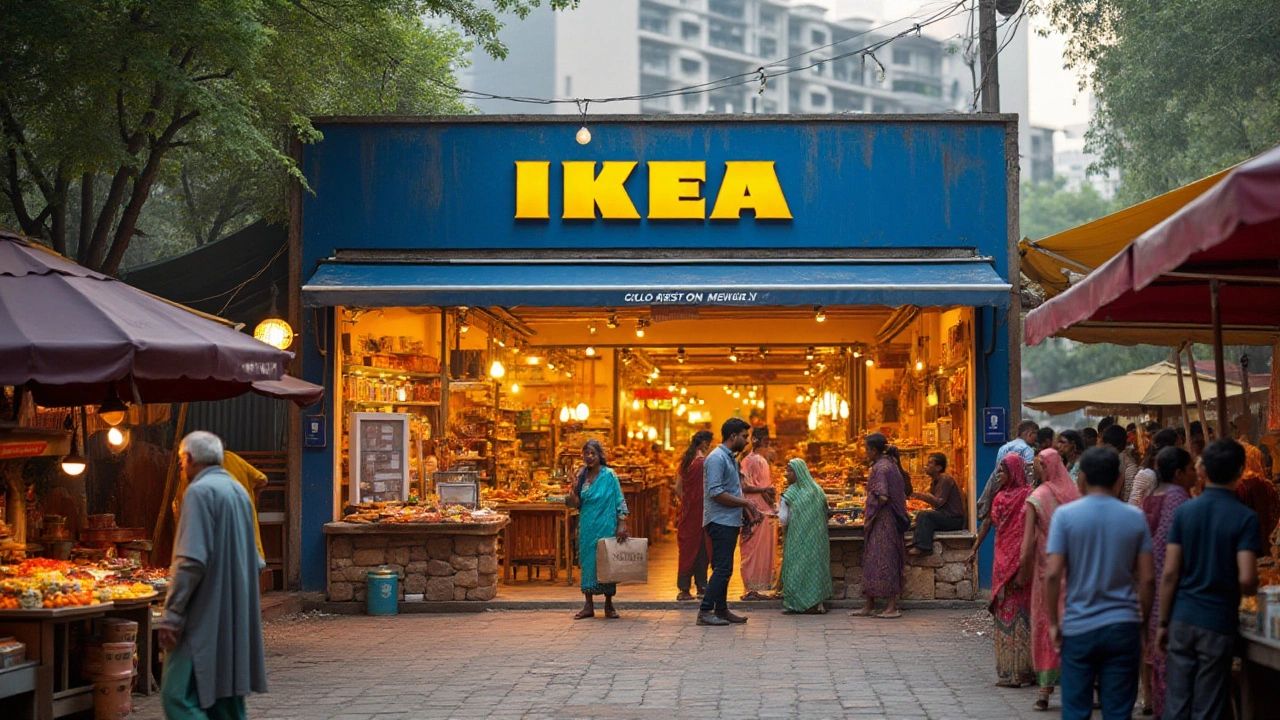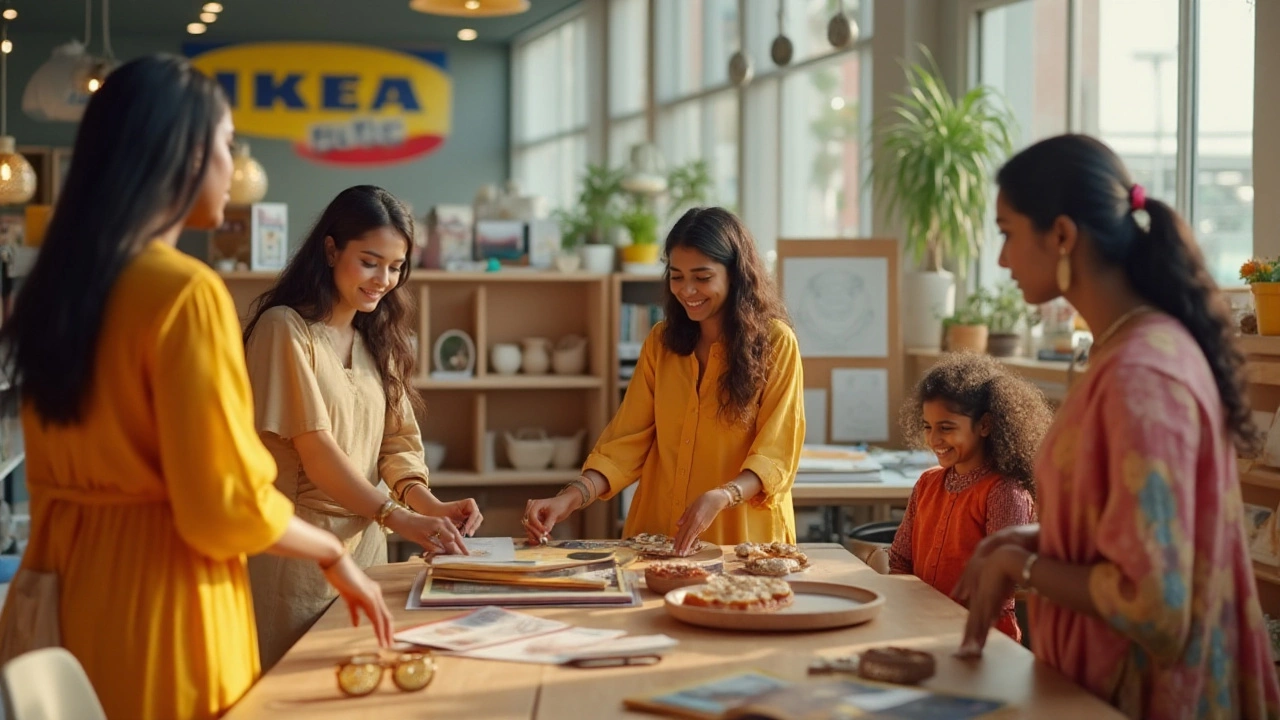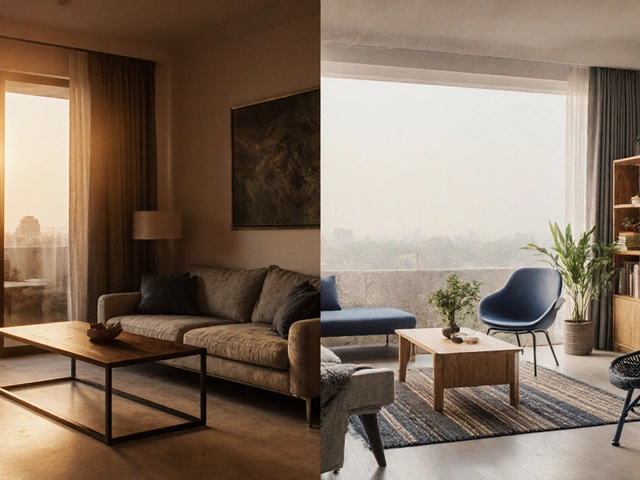When IKEA announced its plans to enter the Indian market, it was met with a whirlwind of anticipation. After all, the allure of stylish yet affordable home furnishings is difficult to resist. However, venturing into India presents its fair share of obstacles, from navigating supply chain logistics to adapting to local tastes that differ significantly from Western norms.
The furniture giant has adopted a unique strategy, balancing its classic offerings with India-specific products. By doing so, IKEA is carving out a niche in a market that is both diverse and competitive. This journey is not just about increasing the number of physical stores but also about understanding the cultural nuances and consumer behaviors that shape purchasing decisions. As we delve into IKEA's growth story in India, it becomes clear that the path to making money is as much about innovation as it is about adaptation.
- IKEA's Entry into India
- Understanding the Indian Market
- Adapting to Local Preferences
- Future Outlook for IKEA in India
IKEA's Entry into India
When IKEA India flung open the doors of its first store in Hyderabad in 2018, it was not merely an event but a significant milestone in retail history. Indian consumers, eager to indulge in the Swedish retailer's promise of stylish and affordable home furnishings, thronged the store. IKEA had been eyeing the Indian market for nearly a decade, working through regulations and bureaucratic intricacies to establish a foothold in a country known for its complex retail environment. Opening a whopping 400,000 square foot store, IKEA marked its relentless commitment to the vast potential it saw in India’s burgeoning middle class.
The decision to start in Hyderabad was strategic, given the city's growing reputation as a tech and cultural hub. However, Hyderabad was just the beginning. With plans to open more stores in cities like Mumbai, Bangalore, and Delhi, IKEA has been methodically expanding its presence. An interesting aspect of its strategy is the mix of large flagship stores and smaller city-center outlets. This ensures accessibility for a diverse range of customers and reflects a nuanced understanding of urban and socio-economic dynamics across the country.
Navigating the regulatory terrain was one of IKEA's biggest initial challenges. Complying with India's single-brand retail guidelines meant sourcing a significant portion of its products locally. This was not merely a compliance exercise but a strategic move that aligns with an increased focus on supporting local artisans and improving supply chain responsiveness. In the words of Jesper Brodin, CEO of Ingka Group, "Entering India wasn't just about expanding the business; it was about redefining how IKEA relates to its new potential customer base.", as he mentioned in an exclusive interview with Bloomberg in 2020.
"We are in India for the long term; we see this as one of our most important markets. We know how different the consumer here is, and we're ready to learn and adapt.", remarked Brodin.
Noteworthy is their innovative use of technology to study Indian consumer behavior. Conducting extensive research, IKEA has gleaned insights into how space is utilized within the typical Indian home setting, which often accommodates multi-generational families in smaller living spaces. Consequently, the brand offers customized solutions, from foldable furniture to space-efficient storage options. Aiming not only to sell products but to enhance the quality of everyday living with thoughtful designs, IKEA's Indian narrative is as much about cultural integration as it is about retail expansion.

Understanding the Indian Market
India’s furniture market is a vibrant tapestry of tradition and modernity, where age-old wooden craftsmanship meets sleek, budget-friendly designs. At the heart of this convergence is a bustling consumer base that appreciates both heritage and value. When IKEA India decided to crack this market, it faced the challenge of not just showcasing its range of products, but grasping the cultural preferences that influence Indian shopping habits. Understanding urban Indian households means acknowledging the significance of space management because many families live in compact apartments. This need has driven IKEA to focus on multifunctional furniture pieces that cater to urban living.
Meanwhile, rural areas present another set of requirements, where furniture often has to stand up to different environmental conditions. IKEA has learned to appreciate the diversity within its target demographic, realizing that a one-size-fits-all approach simply won’t do in a country as expansive and varied as India. The Indian market is unique not only because of its size but also due to its rapid digitization. With an increasing number of consumers turning to online shopping, IKEA has tapped into e-commerce to reach remote corners of the country, seamlessly blending physical stores with digital solutions.
Adapting to these distinct needs, IKEA’s pricing strategy has also been pivotal in its Indian odyssey. While globally known for affordability, in India, the challenge is to maintain that reputation amidst diverse economic strata.
"Our mission goes beyond just sales; it's about creating sustainable homes that resonate with Indian consumers," remarks an IKEA spokesperson from their Indian operations.Developing products that cater to local tastes without forfeiting the brand’s Scandinavian identity has been crucial. By incorporating local raw materials and tweaking product lines to include more culturally relevant items, like seating that can accommodate traditional Indian customs, IKEA deftly marries familiarity with novelty.

Adapting to Local Preferences
Entering and succeeding in the Indian market requires more than just opening brick-and-mortar stores. It demands a deep understanding of the local culture and consumer habits. IKEA has embarked on this journey by integrating itself into the fabric of everyday life in India. One critical factor in this adaptation process has been introducing products that resonate with the unique preferences of the Indian household. Traditional IKEA stores worldwide are known for their emphasis on Western styles, but in India, the company quickly realized the need for custom solutions tailored to the local taste and lifestyle. This includes adding tea-light candle holders, pressure cookers, and a range of steel utensils—staples in many Indian kitchens—to their inventory.
The giant's commitment to catering to local tastes can be seen in the way it has adjusted its food offerings. A visit to an IKEA store wouldn't be complete without tasting their in-house cuisine. In India, this means offering a menu rich with local favorites like samosas and biryanis alongside the famous Swedish meatballs. These small yet significant changes reflect the company’s holistic approach toward entering a culturally diverse market with over a billion people.
Additionally, IKEA has listened and responded to feedback on the scale of furniture sizes. Larger furniture pieces, designed for Western-sized homes, often do not fit into more compact Indian apartments. Therefore, the retailer has introduced size-appropriate units that better align with space constraints faced by urban dwellers. This decision underscores IKEA's adaptability and willingness to innovate for specific markets. "What has defined our success thus far is our willingness to learn and adapt," Peter Betzel, CEO of IKEA India, once noted, emphasizing the multi-dimensional strategy they employ to meet customer's needs.
Embracing online shopping trends has also accelerated IKEA's adaptation efforts. By creating a robust e-commerce platform, they have managed to reach customers in cities beyond those housing their physical outlets. It’s an intelligent strategy given India's growing digital landscape, and it has allowed IKEA to build a comprehensive retail experience that merges both physical and online shopping.
Collaboration with local artisans stands as another cornerstone of IKEA's adaptation in India. By engaging with Indian craftsmen and utilizing traditional techniques, the brand brings in local flavor and supports the 'Make in India' initiative. This partnership not only enriches IKEA's product range but also fosters an economic partnership that benefits local communities. The IKEA India journey demonstrates how adapting to local preferences does not dilute a brand's identity but rather reinforces its ability to be both a global and local brand at once.

Future Outlook for IKEA in India
The future of IKEA in India appears promising, as the company continues to explore innovative ways to capture the hearts and homes of the Indian consumer. One of the key strategies IKEA has embraced is the expansion of its retail footprint across major Indian cities. By opening large-format stores in urban centers and smaller 'studio' outlets in densely populated areas, IKEA is making its products more accessible to different segments of the population. This approach not only boosts visibility but also accommodates various shopping preferences, from in-store browsing to online purchasing.
India's burgeoning middle class presents a lucrative opportunity for IKEA, with a growing appetite for modern home decor and functional furniture. As disposable incomes rise, so does the desire for quality products that reflect global trends yet cater to local needs. IKEA's commitment to offering a range of affordable products while introducing exclusive Indian-inspired collections is a significant step towards capturing this market. Collaborating with local artisans and suppliers not only enriches IKEA's catalog with diverse designs but also bolsters India's craft industry.
Technological adaptation is another area where IKEA is making substantial investments. The integration of augmented reality (AR) in their smartphone app allows customers to visualize how products would fit and look in their homes before making a purchase. This innovation not only enhances the customer experience but also reduces the likelihood of returns, leading to a more streamlined supply chain. Speaking at a recent press conference, Peter Betzel, the CEO of IKEA India, remarked, "Our mission is to bring innovative and affordable solutions to the Indian people. It's about finding that perfect balance between global inspiration and local relevance."
Environmental sustainability is high on IKEA's agenda as it plans its future investments in India. From sourcing sustainable materials to implementing energy-efficient practices within their operations, IKEA is dedicated to reducing its carbon footprint. This commitment resonates well with the environmentally conscious consumers who are becoming increasingly prevalent in India. Moreover, implementing sustainable practices positions IKEA as a responsible corporation that extends beyond profit, ensuring its longevity in a competitive market.
IKEA's path forward in India may also involve strengthening its e-commerce capabilities. With a significant percentage of shopping occurring online, driven by the vast internet penetration in tiers two and three cities, IKEA must enhance its digital infrastructure to stay competitive. This suggests a future where IKEA can seamlessly integrate offline and online experiences, providing a holistic shopping experience that caters to tech-savvy consumers. The trajectory of IKEA in India remains dynamic and ripe with potential, as it continues to refine its strategies to not just survive but thrive in the vibrant Indian market.









